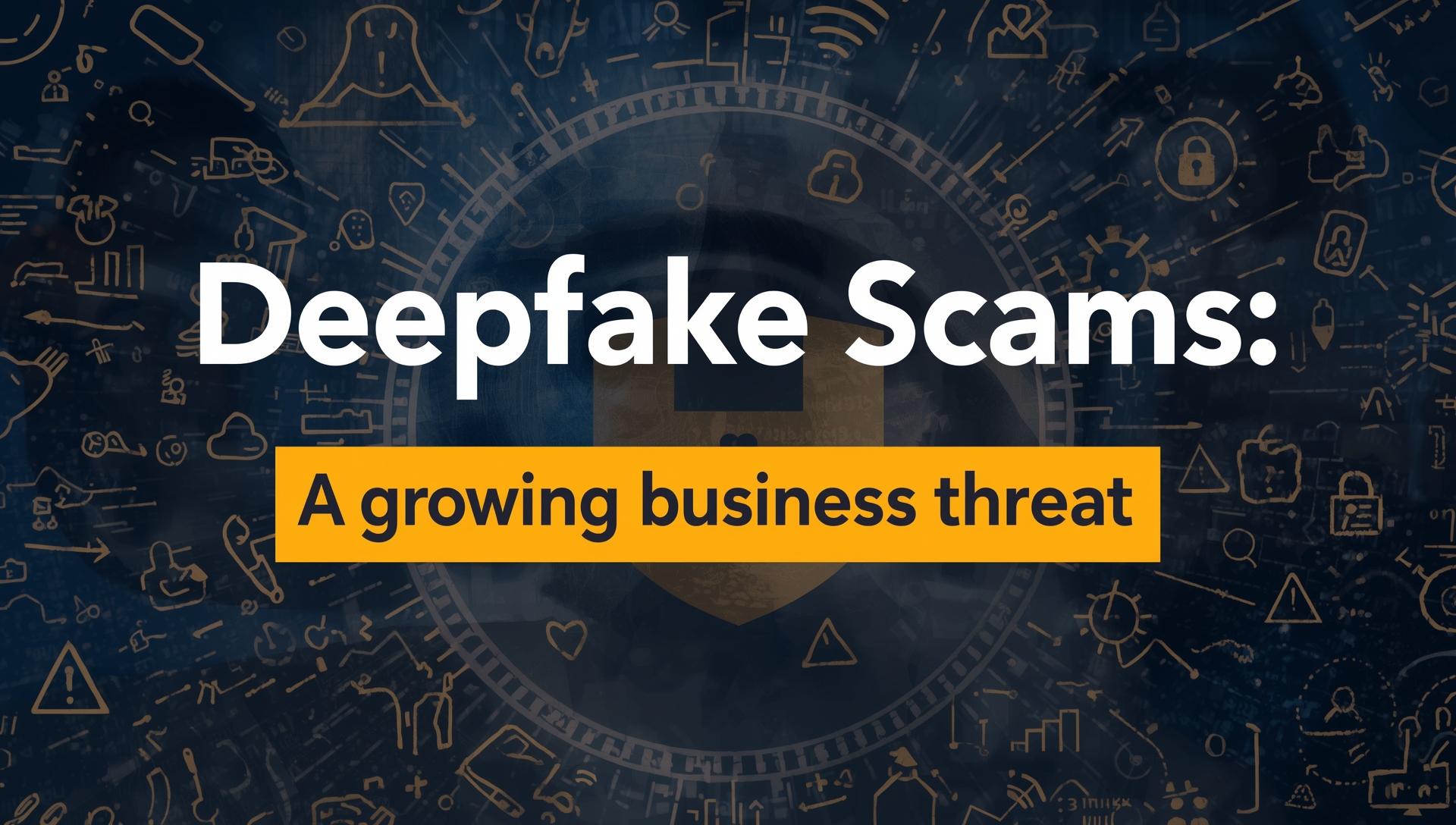
Introduction
In today’s fast-paced online world, thieves don’t always work in dark rooms anymore; sometimes they sit in front of a laptop and let artificial intelligence do the heavy lifting. Deepfake Scams one of the most chilling results is the rise of deepfake scams. What started out as fun tricks for social media has grown into a slick weapon that swindlers now train on companies of every size.
Impersonating a CEO on video or using a lifelike voice call to approve a money transfer is no longer the stuff of spy novels. Crime groups around the globe—from the U.S. and the U.K. to Singapore, India, and Hong Kong—are sharing tips, tools, and even sample fake clips online. Because the stakes can run into millions of dollars in seconds, it is now urgent for firms to spot these dangers and build solid defenses before the next call arrives.
Overview
Put simply, a deepfake is a fake video or audio stew made with machine-learning software. Because these programs learn from vast amounts of footage, they can mimic a person’s face and voice so well that even trained eyes blink twice. When the tech is pointed at a business target, it powers scams that trick staff into wiring cash, leaking secrets, or following phony orders that look all too real.
Recent news about deepfake scams in Singapore and India shows just how quickly these attacks are spreading around the world. Companies in the UK are dealing with deepfake fraud that has cost them millions, and similar issues in Hong Kong are pushing regulators to examine AI-powered crime more closely.
Even the FBI has sounded the alarm, especially over voice-forgery scams that mimic top executives in large firms. Chat threads on Reddit devoted to deepfake hoaxes are packed with people sharing their stories, warning friends, or asking how to spot the dangerous fakes.
Detailed Section
How Deepfake Scams Work
Deepfake phishing is one of the riskiest forms of attack, often featuring fake video or audio of a high-ranking employee. In a shocking case, a finance staffer took what looked like a Zoom call from the CEO, then transferred money without a second thought. Later the team learned that the order had come from an AI-forged voice.
Another growing scam uses celebrities faces to advertise worthless products, shady investments, or fake endorsements. Brands that depend on famous partners or spokespeople can lose trust and revenue almost overnight.
Marketers worldwide now face another headache: deepfake celebrity scams that throw pretend endorsements into the mix. By using a famous face, fraudsters fake social proof, fooling customers into buying imaginary products and tarnishing the hard-earned reputations of real businesses.
Cases are popping up everywhere, and theyre getting attention fast:
- In Singapore, authorities report a sudden surge in deepfake scams and are warning firms to double-check who theyre talking to and to boost basic cybersecurity.
- Indian experts have uncovered fake media deepfakes aimed at winning government contracts, targeting procurement teams across several states.
- In the UK, crooks have hit the finance and legal industries, fields where high-stakes decisions often happen over phone calls and emails that spoofing now makes easy.
- Hong Kong officials are chasing a stream of faked videos used in bogus investment pitches and cryptocurrency schemes.
These attacks dont only hit big firms; small and medium-sized enterprises (SMEs) are fair game, too. Many SMEs still rely on basic IT setups that miss the telltale signs of this modern threat.
Benefits of Early Discovery and Prevention Getting a handle on deepfake fraud gives organizations clear payoffs:
- Financial Security: Spotting fakes early stops would-be thieves from stealing millions through phony transfers and other scams.
Brand Protection
Steering clear of fak e celebrity videos or pretend messages from top bosses helps keep customer trust high and the brand looking solid.
Operational Continuity
Spotting and blocking fake instructions prevents small mistakes from growing into workflow delays that affect nearly every team.
Legal Compliance
Regulators are taking a sharper look at how companies deal with AI fraud. In the U.S., ideas like the Preventing Deepfake Scams Act point toward rules that could hold firms liable for deepfake loopholes.
Risk Management
Running training sessions that teach staff to spot voice fakes or phony clips can cut an organization’s overall exposure to these threats.
FAQ
What are deepfake scams?
Deepfake scams use AI-made video, audio, or images to impersonate well-known people-often a CEO or celebrity-and trick others into acting against their interests.
How do deepfake phishing scams work?
In a deepfake phishing attack, synthetic media appears in an email, audio call, or video, urging an employee to rush a money transfer or share login details.
Are deepfake scams only targeting big companies?
No. While huge corporations grab the headlines-and the biggest losses-small businesses are getting hit more often. Thinner cyber protections and lower alertness make these smaller firms easier prey.
What is the best way to protect against deepfake scams?
Layered verification is the first guard. For any big money send-off, pair voice calls with visual ID or a separate app check. Staff training, strong biometrics, and fresh deepfake spotting tools also help block the trickery.
Has the government taken any steps?
Yes. Under the new Preventing Deepfake Scams Act, using fake videos or voices to steal is set to become a crime, nudging firms to tighten digital ID checks.
Final Thoughts
AI tech keeps improving, and so do crooks tricks. Deepfakes are past the theory stage-they are live, worldwide assaults, whether in Singapore, the UK, or on your local video call.
The simple takeaway is this: dont gamble on being the lucky one. Learn how fakes work, write clear play-books, invest in smart tools, and keep your crew up to speed to shield your business in the AI fraud era.
Whether you’re reading the latest deepfake stories splashed across Indian newspapers, scrolling through the Reddit threads where users share their own run-ins, or taking the FBI’s warning to heart, one truth stands clear everywhere: deepfakes have arrived and spotting them grows trickier every day.
Protect yourself now, or you could find your name in the next big news story.
Read morehttps://blogcatalogg.com/top-10-passive-income-ideas-that-work/



